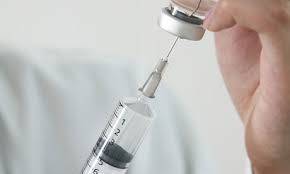Are there alternatives to sedation for those needing an upper endoscopy, or does everyone have to be sedated?
There are almost 10 million upper endoscopies performed annually in the USA. Upper endoscopy is the insertion of a camera through your mouth to look at your esophagus and stomach, generally done when someone has complaints of chronic heartburn. In general, one needs to be sedated with a twilight type of anesthesia during an upper endoscopy. However, conscious sedation is not necessarily a free ride. There are small but finite risks associated with conscious sedation, namely problems with the heart (heart attack) and lungs (stopping breathing) that can take place.
Most people are not aware that there are certain circumstances where sedation may not be necessary, especially when one only needs to examine the esophagus (the tube that connects the throat to the stomach). This procedure is called TransNasal Esophagoscopy(TNE), where an ultrathin camera, the size and softness of a piece of cooked spaghetti, is performed with the patient wide awake, in a doctor’s office, only requiring a small amount of numbing medicine misted into the nose.
The indications for a TNE are the following:
- Chronic cough (8 weeks or more)
- Hoarseness
- Lump-like sensation in the throat
- Frequent throat clearing
- Difficulty swallowing
The contraindications to performing a TNE, i.e. TNE is not the right exam, rather a sedated upper endoscopy is the more appropriate exam, are:
- Abdominal pain
- Nausea
- History of ulcer disease
TNE: Myths and Facts
MYTH #1: TNE is not as well tolerated as conventional endoscopy (EGD).
FACT: From 1996 until now, there have been numerous studies comparing TNE and EGD, demonstrating that patients can tolerate a camera in their nose as well as they tolerate a camera in their mouth.
MYTH #2: TNE is not as effective as EGD.
FACT: Unsedated TNE has demonstrated equal accuracy in the detection of Barrett esophagus when compared with conventional, sedated, transoral upper endoscopy.
MYTH #3: TNE is expensive.
FACT: TNE is one-fifth the cost of EGD.
MYTH #4: TNE will increase our national health care costs.
FACT: TNE can save the health care industry about $5 billion per year.
MYTH #5: TNE has side effects.
FACT: Beyond the potential for a nosebleed, TNE is exceedingly safe.


